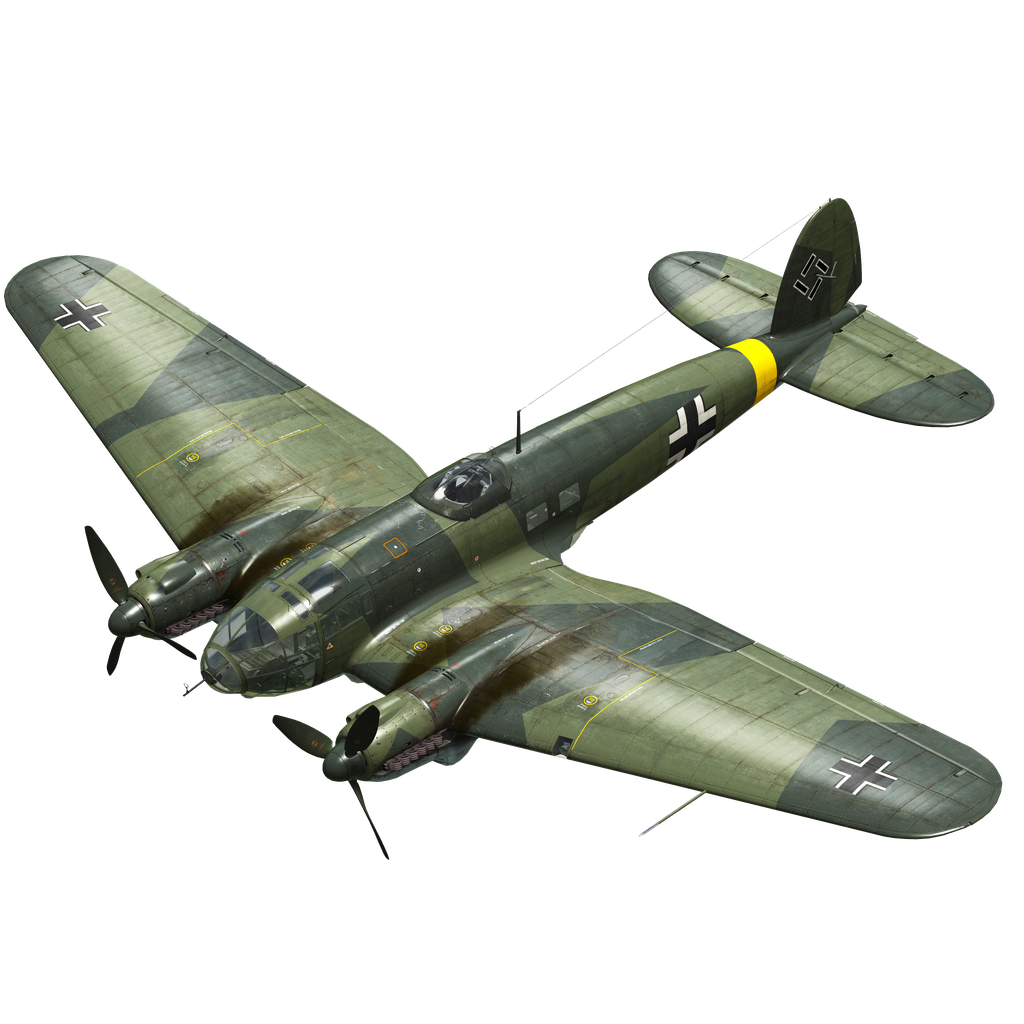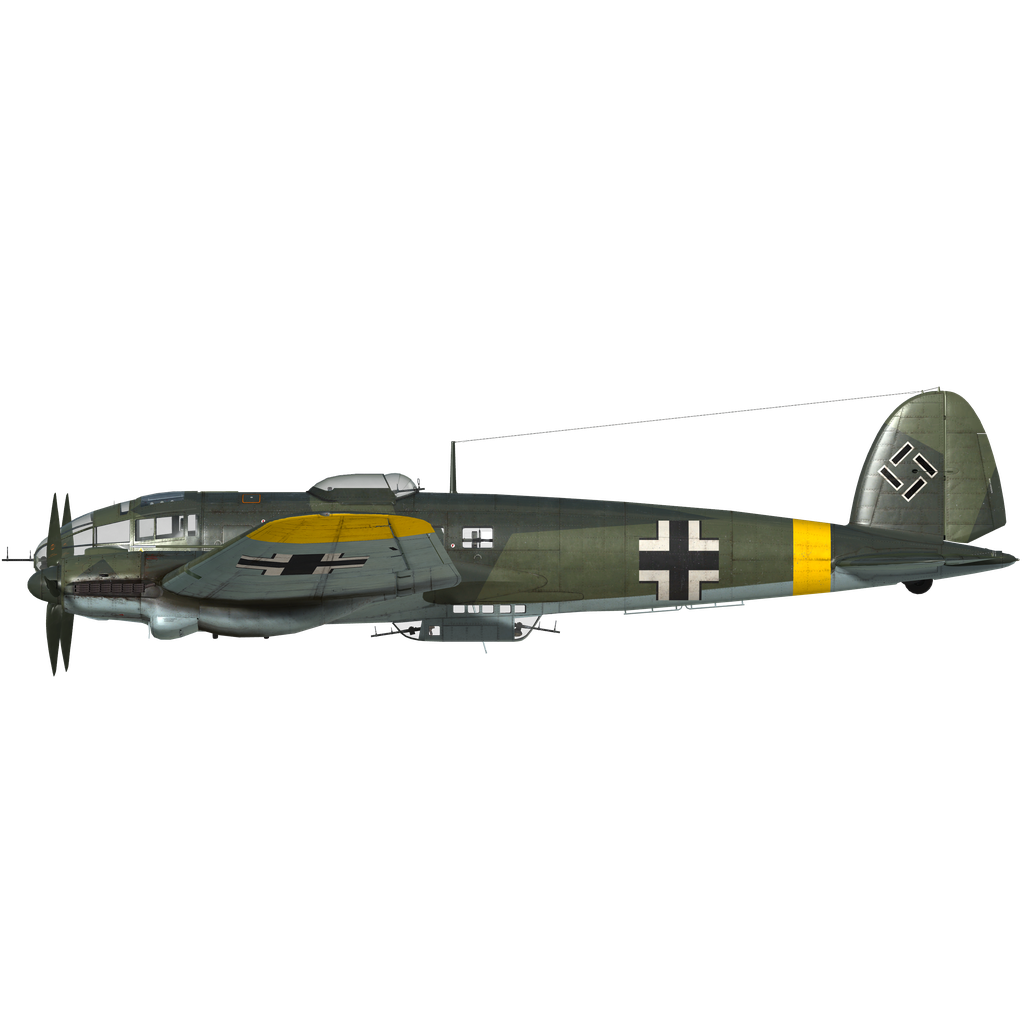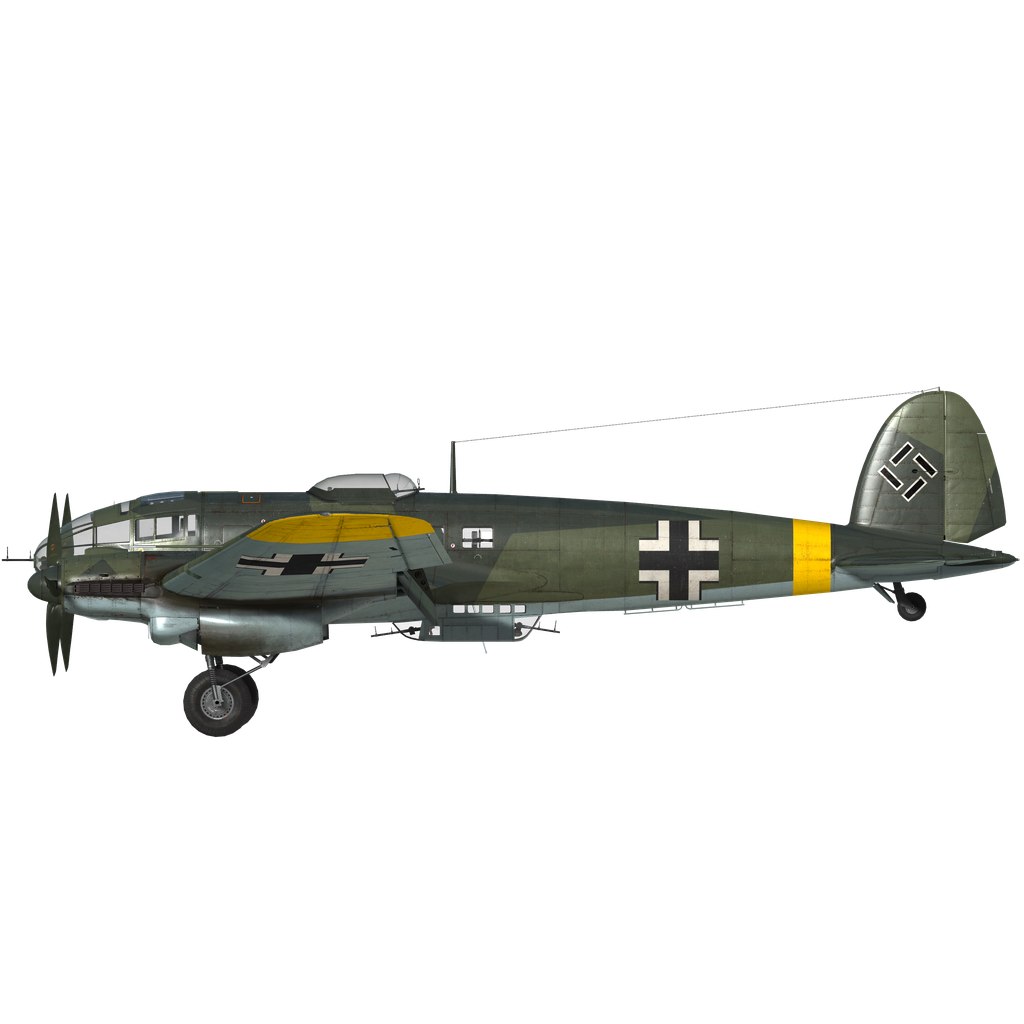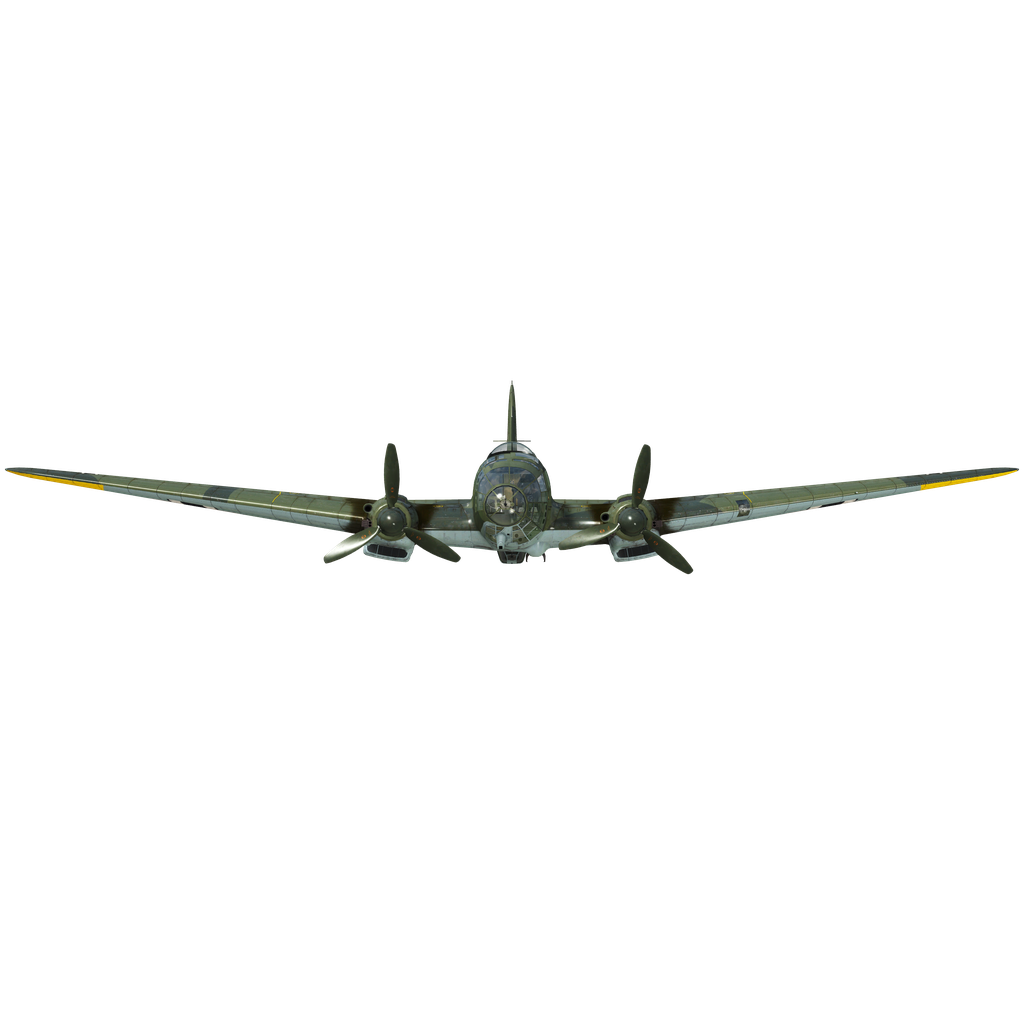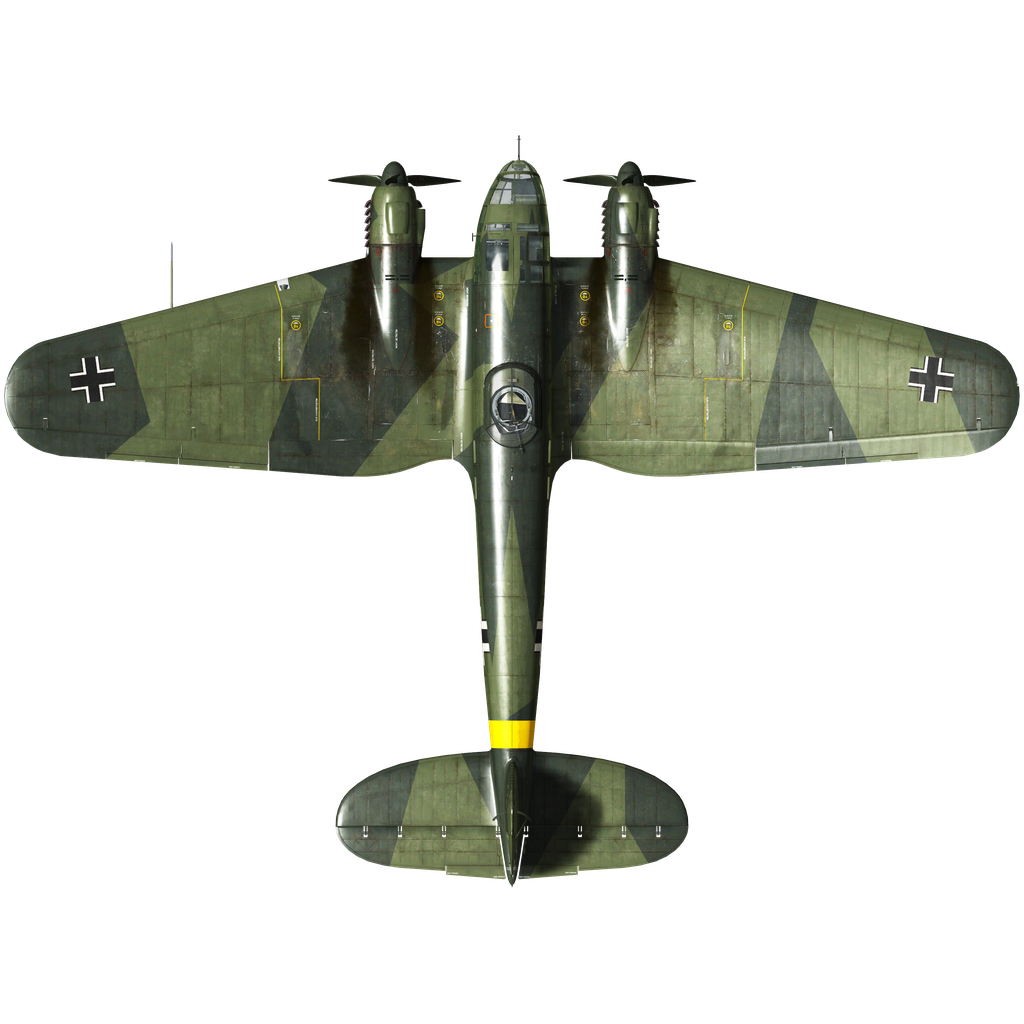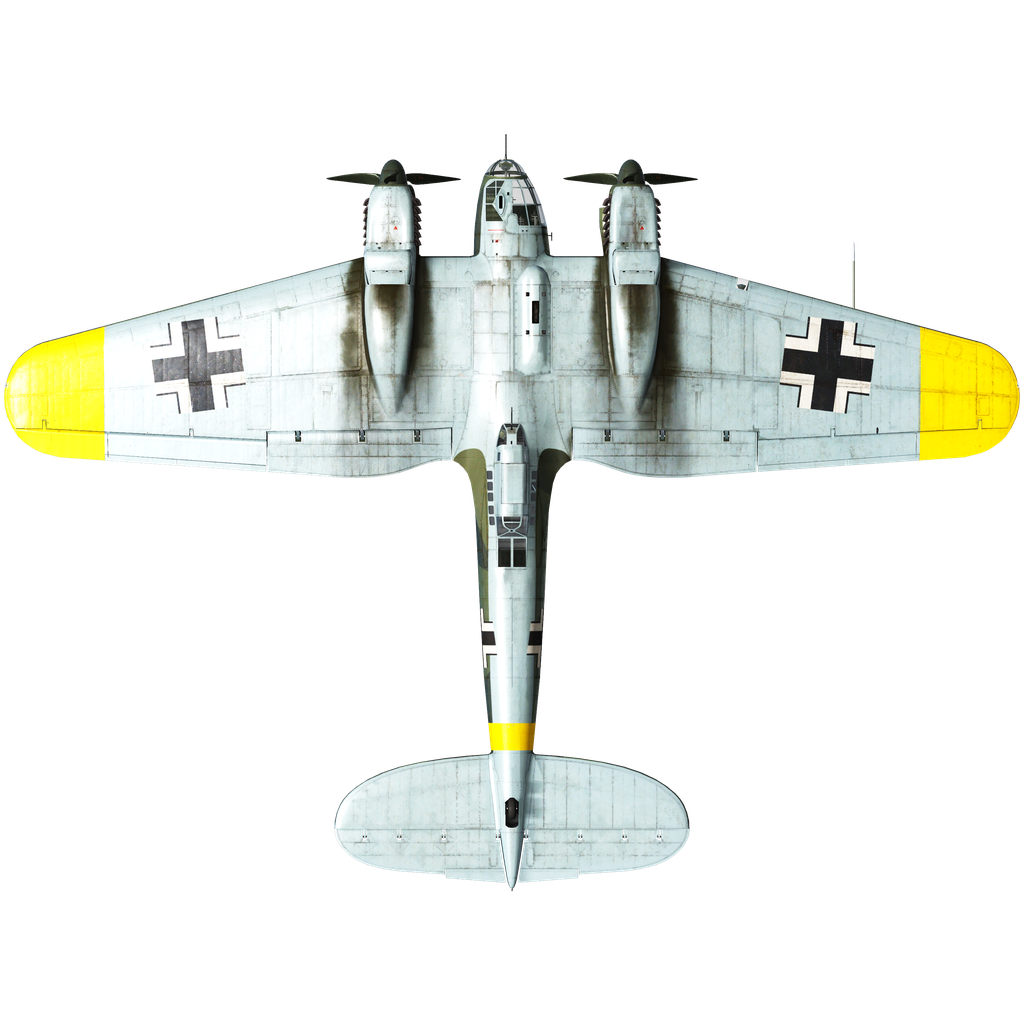Since the provisions of the Treaty of Versailles prohibited Germany from having an air force, the Germans disguised the development of military aircraft as civilian projects until 1935, but immediately designed passenger aircraft as bombers. One of the machines created this way was the He 111, which turned out to be a good bomber and a mediocre passenger plane. From 1936 to 1941, bombers of the A, B, D, E, J, and P series were produced with engines from Daimler-Benz and Jumo. However, since the DB 601 engine was mainly used in fighter aircraft, parallel to the He 111 P, the He 111H was also produced with Jumo 211 engines.
A mass modification produced from April 1941 was the He 111 H-6. It had Jumo 211F-1 engines combined with wide-blade propellers and single exhaust pipes instead of manifolds. Late production aircraft were equipped with Jumo 211F-2 engines.
The plane's wing was a two-spar with a stressed skin, typical of aircraft with semi-elliptical sections, with a straight leading edge installed with a slight sweep. The center section was integral to the all-metal fuselage, which had three main frames and several auxiliary frames connected by a large number of spars and stringers. The slotted flaps were operated by the pilot. The main landing gear was double and hydraulically retracted into the nacelles.
The He 111 H-6 was characterized by an improved defensive armament, already introduced with the H-2 modification. Initially, MG 17 machine guns were installed in the nose and in the front of the underbelly gondola, but in different variations (in one or both positions). Later the machine gun could be replaced by an MG/FF cannon. Some planes had a 7.92 mm MG 17 machine gun in the tail cone, while others had an aircraft grenade launcher in the same position, from which grenades were thrown with parachutes. Both the additional machine gun and the grenade launcher ensured the destruction of the area behind the tail, close to the upper firing point. However, the effectiveness of these systems was low.
The He 111 H-6 was equipped with both internal and external suspension points and could carry up to 2500 kg of bombs or aircraft mines and torpedoes. As a torpedo bomber, the H-6 carried a pair of 765 kg LTF 5b torpedoes on PVC mounts.
In 1942, German designers attempted to equip the mass-produced He 111 H-6 with new types of weapons: increasingly sophisticated means of aerial warfare were being developed in Germany. One of these was the FX 1400 "Fritz X" radio-controlled bomb. In the spring of 1942, several H-6s equipped with FuG 203 control system transmitters were used to test this bomb in northern Italy. Despite some successes, the H-6 proved to be unsuitable for employing such weapons under combat conditions. Other H-6s were used for test drops of BV 246 gliding bombs and L10 Friedensengel gliding torpedoes, but all these exotic weapons were only tested on the H-6 — it was never used in combat.
The aircraft was used as a day and night bomber, minesweeper, torpedo bomber, and sometimes as a transport aircraft. The He 111 H-6 quickly became the most common and widely used Heinkel bomber model: pilots loved it for its ease of control even at maximum load, excellent stability and maneuverability, and technical staff noted its ease of maintenance. Although it was planned that it would be replaced in production by new models, failures in their testing forced the continuation of production of a well-developed machine that required minimal labor costs. The H-6 did not fully meet the requirements of the war on the Eastern Front, so it was built until September 1942, with a total production of 1, 775 planes.
1. W. Creen “The Warplanes of the Third Reich”, Galahad Books, 1986
2. “Wings of the Luftwaffe” Translation of V. Green’s book “Combat Aircraft of the Third Reich” by A. Firsov, 1993
3. Materials from the site airwar.ru
4. “Heinkel He 111 Photo Archive” War in the Air No. 102, 2000
